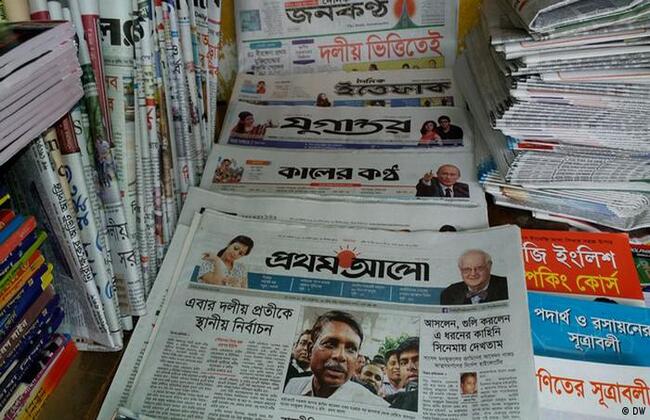
In the mid 1990s, I travelled to Bhola in the southern part of the country on a reporting assignment. The region had just been hit by a powerful cyclone. Having moved around the char areas assessing the impact, I returned to Bhola town in the evening completely forgetting that the cyclone had caused the electricity lines to snap, rendering all electronic devices and thereby making all fax machines inoperative. This was shocking news for me. Time was running out for my deadline back in the Daily Star office. I nonetheless sat under a candlelight and started writing my report. Having seen my desperation, a local journalist sought help from the Deputy Commissioner (DC)of Bhola, explaining how badly we needed the electricity connections to send our dispatches. The DC reciprocated and electricity was restored for one hour and I managed todispatch my report, finishing my day intotal exhaustion but with a sigh of relief.
In today’s modern context,the predicament I faced in Bhola seems ridiculous. But alas, that was the hard reality of journalism we had to endure before technology arrived. For instance, in those days when you needed to talk to someone, seeking a quote over your report, the chances of finding him/her on a landline were slim. The only option was totravel and attempt to find the person. Not easy on a tight deadline and schedule.
Journalism has drastically shifted its course worldwide over the last two decades. But its basics have remained the same. In simple words, journalism is information and communication. It is the events of the day distilled into a few words, sounds, pictures or videos, processed by the mechanics of communication to satisfy the human curiosity of a world that is always eager to know what is new and happening.
Mechanics of journalism have automatically drifted to a new platform called the World Wide Web (www). Ordinary man’s receptivity to journalism has been revolutionized into a new age of technology. Bookworms have taken a backseat. Instead, there are e-books on tablets and mobile devices. In seconds, even in the remotest part of the world, people access the ‘www’ mechanism that instantly allows the person gain valuable information on their fingertips – on anything your mind can muster up.
Most broadsheet newspapers in the world felt the technological tremor that shook their very foundation of earning revenue. The number of readers fell so sharplythat the executives were forced to find alternatives on-line. Throughout the world, print media witnessed a sharp decline too. Social media with not-so-reliable news items, uncountable on-line news portals and electronic media posed the biggest challenges for print media. As the mediabosses urgently tried to find a solution, they were faced with the daunting task of retraining their old staff and entering the age of technology whilst embracing complete transformation.
By the time print media thought they were recovering, the pandemic swept through the world. It was a devastating blow that caused a global slowdown on every business. Newspaper vendors disappeared from the scene fearing the viral attack. Prolonged lockdowns, shut down of all transports around the country and print media professionals suddenly found themselves in a bleak situation with advertisers, subscribers and readers retreating in panic. During the pandemic, the state of the affairs was such that a leading Bangla daily tried to promote sale of their newspaper with the slogan, “Newsprint does not spread virus.”
As the pandemic spread, journalists and press workers lost their jobs. Many newspapers shut their doors altogether and many moved to online versions, severely curtailing the physical newspaper.An ever-increasing number of the younger population are now using their smartphones to access news. Big players in the industry took the hit. The challenge was now to generate revenue out of their digital platforms;to find innovative ways to compete with electronic media as well as other outlets and retain the market.The whole industry has yet to recover from this existential crisis.
Yet traditionally millions of Bangladeshis have always had a very strong cultural bond with print media.Newspapers are still the only medium of mass communication that ensures relevance and accuracy of information through the process of fact checking and editorializing by senior newsmen.
In January 2018, the information minister told the nationalparliament that there are a total of 3,025 print media outlets. Out of 1,191 dailies in the country, 470 are published from Dhaka alone. Most of these newspapers are in Bangla. Only a handful of them are printed in English language.
Over 1,700 applications poured in from around the country, when the government took initiative to register online news portals recently.
This shows the vibrancy of the sector. While it is difficult to revive a waning culture of reading newspapers, the future of print media remains in the balance and eagerly awaiting to be judged by the generations to come.


